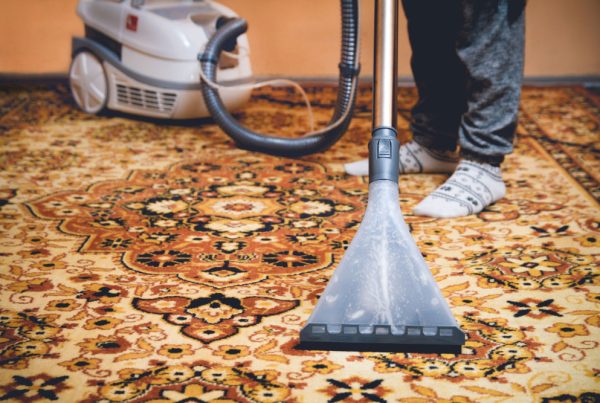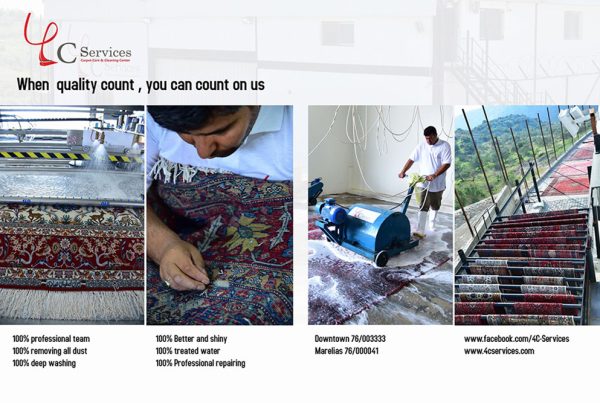From sea mist to cedar air, Lebanon’s microclimates shape how carpets age, wear, and respond to cleaning. A rug that thrives in a breezy coastal apartment in Beirut may face very different pressures than one in a cool mountain retreat. Understanding humidity, temperature swings, UV exposure, and household lifestyles across regions helps you choose smarter care methods and timing. This guide explains how to adapt daily maintenance, cleaning cadence, and preventive measures so your rugs look their best—wherever you live in Lebanon.
Why Microclimate Matters
Rugs are living textiles. Wool, silk, cotton, and natural dyes breathe and react to the environment. High humidity can swell fibers and encourage microbial growth; dry air and heat can desiccate pile and embrittle foundations. UV intensity and the direction of natural light affect color fade and hand. By matching care to local conditions, you protect beauty, value, and structural integrity for decades.
Coastal Homes: Moisture, Salt, and Fine Grit
Coastal living offers fresh air—and a few rug challenges:
- Humidity load: Persistent moisture can soften fibers, encourage odor retention, and slow drying after routine cleaning.
- Salt aerosol: Sea mist leaves micro-residues that attract water and may dull sheen on silk highlights.
- Fine sand and dust: Granular soils embed deeply, acting like micro-abrasives that flatten pile and mute color.
- Bright, angled light: Seaside windows often deliver strong UV, accelerating fade on reds and blues.
Coastal care focus: consistent dry soil removal, humidity-aware drying, and UV management. In Beirut, where sea breezes are common, these steps pay off quickly in clarity and resilience.
Mountain Homes: Dry Air, Temperature Swings, and Heat Sources
Higher elevations bring cooler air and unique stressors:
- Low humidity: Dryness can make wool feel brittle and increase fiber shedding, especially in older rugs.
- Temperature swings: Day–night changes can tighten and relax the foundation, encouraging buckles or corner curl.
- Wood stoves/heaters: Particulates bond with oils in the pile, leading to faster soiling and subtle odor retention.
- Winter moisture at entries: Melt and mud create protein/tannin stains that require careful, dye-safe treatment.
Mountain care focus: softness retention, tension balance, and particulate management—especially near heat sources.
Fiber & Construction: Match the Care to the Rug
Different rugs need different strategies in each microclimate:
- Wool pile, hand-knotted: Durable and forgiving; benefits from regular dust extraction and controlled-humidity drying.
- Silk or silk highlights: Sensitive to alkalinity, moisture, and UV; requires cool water, low agitation, and strict shade control.
- Flatweaves (kilims): Light and breathable but prone to edge fray; prefer gentle washing and careful blocking to keep edges straight.
- Machine-made or tufted: Backings and adhesives can react to moisture or heat; avoid prolonged wetness and high temperatures.
Daily & Weekly Maintenance by Region
Coastal routine: vacuum with suction-only (no beater bar on delicate pieces) two to three times weekly; wipe door thresholds to limit sand ingress; rotate rugs quarterly to balance UV and traffic. Use breathable pads on tile or marble to reduce lateral movement and edge abrasion.
Mountain routine: vacuum weekly with additional passes near stoves and heaters; use a breathable pad to buffer temperature shifts and stabilize geometry; rotate seasonally to reduce wear paths. Consider a small humidifier in extremely dry rooms to maintain comfortable fiber moisture.
Spill & Stain Response (Coastal vs. Mountain)
- Coastal: Blot (never rub) with a white cloth; salt-related dampness can cause longer drying times, so promote airflow. Avoid heat-based drying that may set tannins or alter pile.
- Mountain: Blot quickly; soot or ash requires careful particulate removal before any moisture. Keep heat sources from blowing directly across damp fibers to prevent distortion.
Cleaning Cadence for Lebanon’s Microclimates
Traffic and environment drive timing more than the calendar. As a general guide for Lebanon households:
- Coastal: professional cleaning every 12–18 months for living/dining areas; bedrooms every 18–24 months. Humidity can trap odors even when a rug looks clean.
- Mountain: living areas every 12–24 months, with smoke-exposed rooms on the earlier side due to particulates and oils.
For both environments, insist on colorfast testing, pH-balanced chemistry, and controlled drying. These steps protect natural dyes and the hand of the textile.
Sun, Shade, and Color Preservation
UV is a universal threat. Use sheers, UV films, or strategic placement to soften direct rays. Rotate rugs quarterly; a simple quarter-turn evens out fade and pile compression. In bright coastal apartments near Beirut, this alone can add years of visible life to reds, blues, and botanical motifs.
Edges, Fringes, and Geometry
Microclimates influence how edges and corners behave. Coastal humidity can soften fringe bundles; mountain dryness can make them brittle. Inspect perimeters quarterly: if you see minor fray, address it before it becomes structural loss. Buckles or waves indicate tension imbalance—blocking and edge stabilization can restore squareness and protect borders.
Smart Storage and Seasonal Swaps
- Coastal storage: clean and fully dry before rolling; use breathable covers; elevate from floors and allow airflow.
- Mountain storage: avoid overly dry locations (near heating); use breathable wrapping and check periodically for tension marks or corner curl.
Professional Services: What to Ask For
When you schedule expert care, ask about these essentials:
- Inspection protocol: fiber mapping, colorfast testing, and structural checks.
- Dust extraction: thorough dry soil removal before any wet work.
- pH stewardship: wool- and silk-safe chemistry; cool water for fugitive dyes.
- Controlled drying: monitored airflow and temperature; blocking to square.
- Edge and fringe stabilization: preventive overcasting or fringe root securing if needed.
Microclimate Checklists (Quick Reference)
Coastal homes checklist:
- Vacuum 2–3× weekly; focus on entry runners.
- Manage humidity; promote airflow after cleaning.
- Rotate quarterly; add UV moderation at windows.
- Inspect fringes; secure early signs of fray.
Mountain homes checklist:
- Vacuum weekly; extra near heaters/stoves.
- Stabilize geometry with breathable pads.
- Rotate seasonally to balance wear and sun.
- Monitor dryness; avoid over-drying delicate fibers.
Key Takeaways
- Environment directs care: adapt routines to humidity, temperature, and light.
- Preventive habits win: pads, rotation, UV control, and gentle vacuuming preserve color and hand.
- Professional standards matter: testing, dust extraction, and controlled drying protect value.
Disclaimer
This article offers general guidance for adapting rug care to coastal and mountain environments. Every rug differs in fiber, dyes, age, and construction. Always perform colorfast tests before any cleaning attempt and avoid aggressive agitation or harsh chemicals. For valuable, antique, or fragile textiles, seek a professional assessment and service tailored to your home’s specific microclimate in Lebanon.



